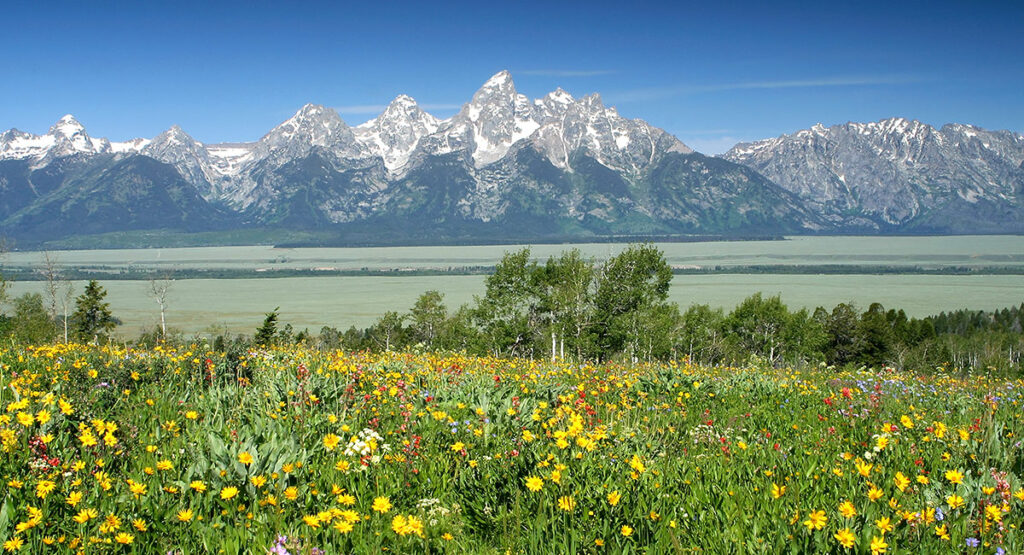Linda Merigliano is the Recreation Program Manager for the Jackson and Black Rock areas of the Bridger-Teton National Forest, and one of local leaders in Recreate Responsibly. Spanning from Kemmerer to the Yellowstone border, the Bridger-Teton National Forest is one of the largest national forests in the United States, covering an area of nearly 3.4 million acres and including large swaths of designated wilderness.
Linda acts as a dedicated outdoor leader of some of Wyoming’s most cherished public lands. Her focus is on providing recreation opportunities and working with the public to promote responsible recreation so that people can enjoy public lands in a way that protects wildlife and water and minimizes impacts on other visitors. The national forest offers a plethora of opportunities for Nordic skiing, fat biking, and snowshoeing in the winter, leading to a partnership between Linda at the Forest Service and the Jackson Hole Nordic Alliance.
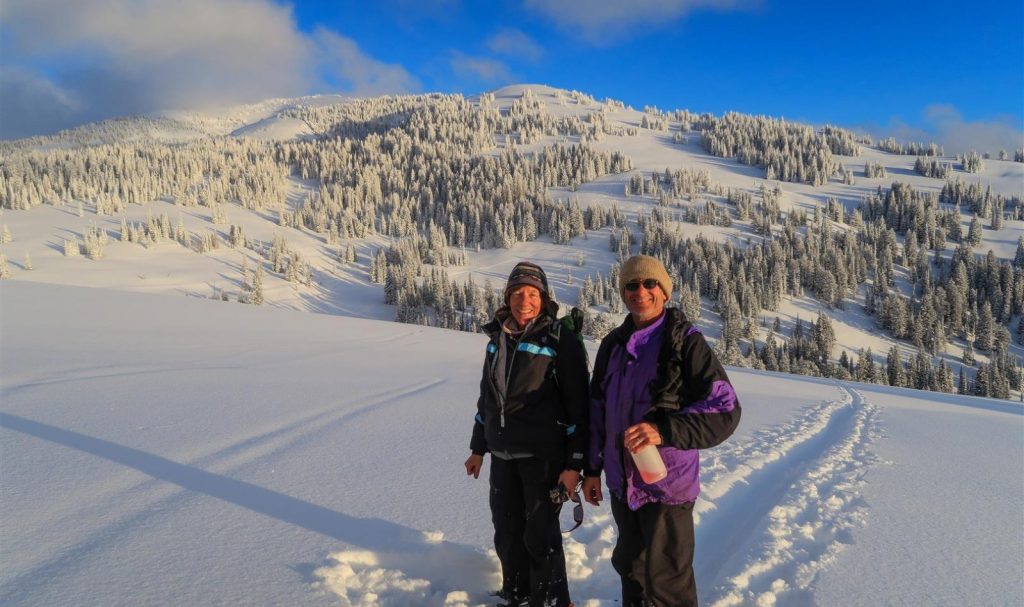
Linda first came to Jackson as a volunteer with the Student Conservation Association and decided to stay and settle in Jackson instead of heading off somewhere new. Growing up in the Adirondacks, she spent a lot of time classic cross-country skiing in the mountains and at touring centers with groomed tracks, so she loved the snow. But the winters in the Northeast were becoming more variable, so Jackson was the perfect, snowy place for her and her husband. Both of them ended up working at Grand Targhee Resort during the winters and the Forest Service in the summers. For a few years, Linda taught telemark and Nordic skiing at Targhee while she wrote her master’s thesis.
“The good winters and snow have been the things that have kept us here [in Jackson],” Linda said. “I’m probably one of a dying breed–I’m still a telemark skier. Not very many people are out there telemarking anymore, so we do spend quite a bit of time in the backcountry. It’s a nice combination: if it’s not great powder conditions in the backcountry, usually the Nordic tracks are pretty good.”
Linda believes that in Jackson Hole, most people come from a place of care for public lands and a desire to protect them. However, that doesn’t always translate seamlessly into actions.
“Recreation is tough because the individual impacts are pretty minor, but the cumulative impact can be substantial,” Linda said. “And at the same time recreation use is increasing, we’re also seeing a much more reduced capacity to address the effects of that use and work with people to get the right messages out.”
The Forest Service federal budget has been largely going towards issues with fire, which has been especially costly with the impacts of the wildland fires in the west this past year.
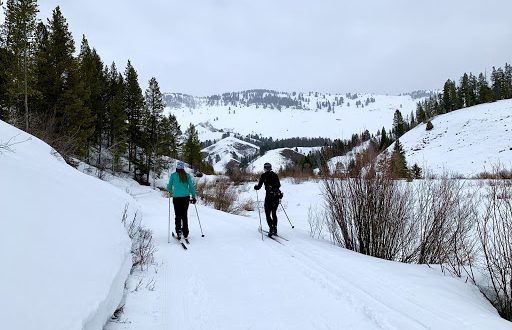
“Our ability to have the funds necessary to work with people and maintain the conditions that people want for all these recreation activities is really diminished,” Linda said. “So we are fortunate in Jackson Hole to have so many non-profit organizations, like Jackson Hole Nordic, that are willing to help.”
In her work with the Nordic Alliance, Linda has tried to make sure that there is equal effort and attention on getting people involved in helping protect the forest through individual effort, donations, or volunteer time as there is on promoting the recreation activities themselves. Her philosophy has always been rooted in outreach, communication, and education first, starting with a belief in everyone’s good intentions before exercising any restrictions or executive action.
The Bridger-Teton Forest Service’s Winter Ambassador program has been really successful at providing on-the-ground guidance to recreationists and fostering more responsibility out on the forest lands.
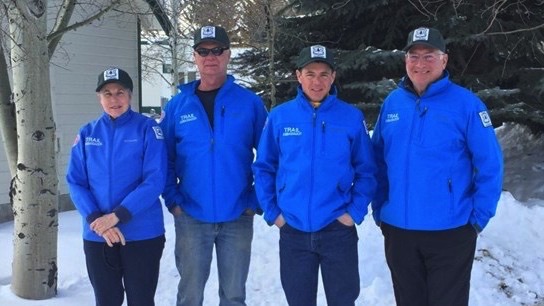
“It takes a special person that can work with the public and be really friendly but yet persuasive in terms of getting people to be responsible,” Linda said. “It’s people like that that are out there every day that make a huge difference.”
One of the major issues the national forest faces in the winter is around dogs because there is more concentrated use in the winter, as more people use forest service trails for dog-walking in the winter. The issue is both with dog waste and dog control, particularly because winter wildlife areas are so critical.
Unfortunately, after a lot of issues arose in 2015, the Bridger-Teton Forest Service had to close Cache Creek to dogs for a week in order to begin a community discussion about how to manage dogs, resulting in a leash requirement at trailheads. The idea was to avoid the chaos of dogs getting excited and bolting around trailheads. Though it was a difficult decision, most, if not all, of the dog-owning trail users appreciated the necessity of the situation and the call to action to increase responsibility among trail users.
“Having the ambassadors out in those areas constantly talking to people about [the issues with dogs] is why [the leash requirement] has been effective,” Linda said. “We’re seeing pretty good compliance–not perfect, but pretty good. I’ve seen that making the regulations pretty focused allows people to be effective in providing a clear presence in those areas.”
The control issue with dogs also extends to human conflict with dogs running off and causing collisions with other skiers or dogs on the trails. For wildlife, other dogs, and humans on the trails, finding ways to manage dogs is essential for fostering safe and responsible winter recreation in the national forest.
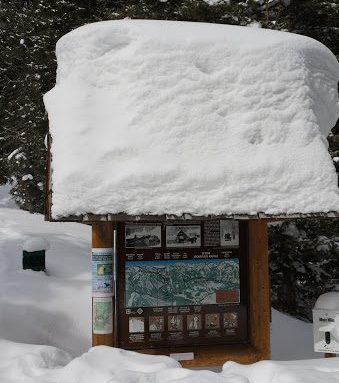
With ever-growing ways to enjoy the public lands of Jackson Hole and Teton Valley during the winter, it will be critical to find a way to balance increased human presence in the winter environment and the critical space and habitat for animals trying to survive the winters. The Nordic Alliance works in tandem with the Forest Service to achieve this balance while also advocating for winter recreation that exists separate from the centerpiece of resort skiing in Jackson.
One of the winter ambassadors at Cache Creek came up with the idea to put up a board at the trailhead where people could note their wildlife interactions to use word of mouth to increase awareness and responsibility around wildlife.
“Those boards have ended up being really popular, as people are seeing a lot of critters and writing notes on the board as a heads up to other recreationists, which really does make a big difference,” Linda said. “If there’s a moose in the area, you better have your dog on a leash, and then if there’s a moose right in the middle of the trail, you may have to be prepared to turn around. It’s those kinds of behaviors that are really critical.”
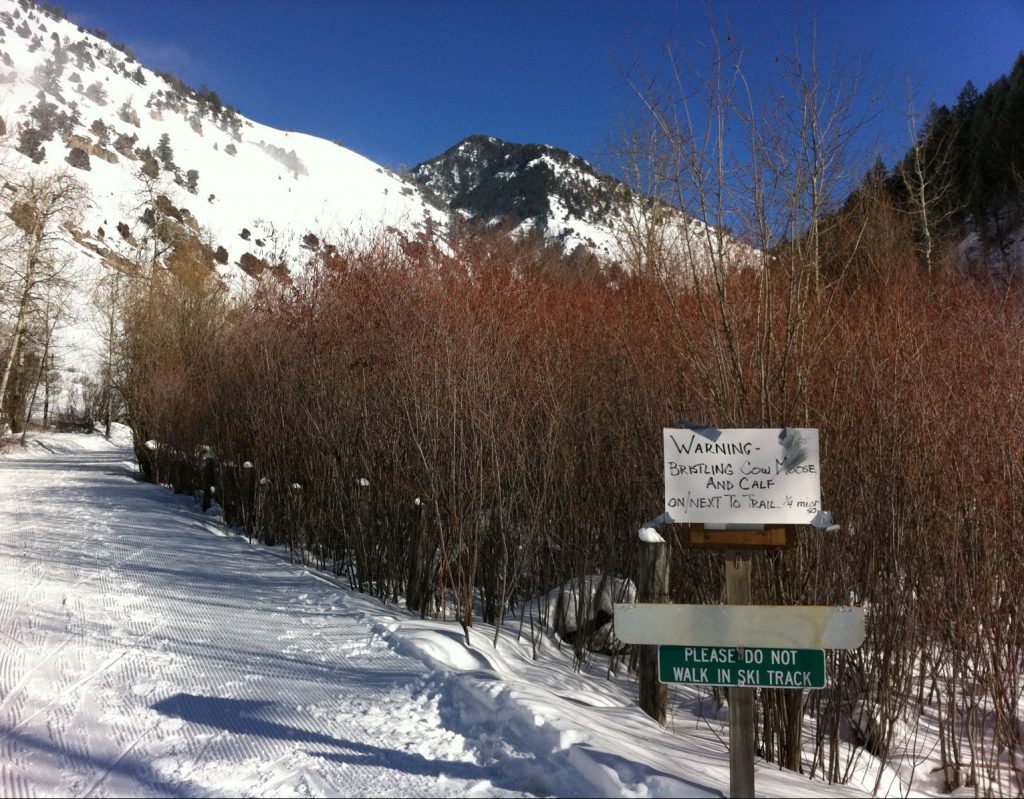
Awareness and cooperative efforts like the info boards and education outreach with the winter ambassadors are essential in protecting public lands and the animals that inhabit them.
Winter wildlife closures are also an extremely important aspect of responsible recreation. It’s been an important part of many advocacy projects, including the Don’t Poach the Powder campaign. In the winter, the wildlife in Jackson is in a critical position of survival that can be easily disrupted by human activity.
“Building an ethic starts with being aware of your surroundings and knowing we’ve got a lot of winter wildlife closures,” Linda said. “In Game Creek and Cache Creek, if you look up on the hillside where the closed winter range is, you are pretty much guaranteed to see elk and deer up there. [Trail users just need to be] aware that there’s a reason why those areas are so critical and that we need to respect those closures to give the critters the space they need.”
Nonetheless, there is so much wonderful winter terrain to explore in the national forest outside of the closures. When she’s not exploring or telemarking in the backcountry, you can find Linda Nordic skiing in Teton Canyon, the Southern Valley Trails system, and Shadow Mountain.
If you’re looking for trails within the Bridger-Teton National Forest, you can check out:
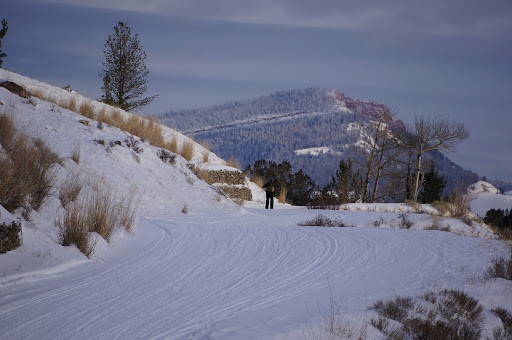
Note that for each trail, conditions will vary: some are groomed, some non-groomed, some suited to classic cross-country skiing, some perfect for fat biking or snowshoeing. Make sure to check individual trail details.


